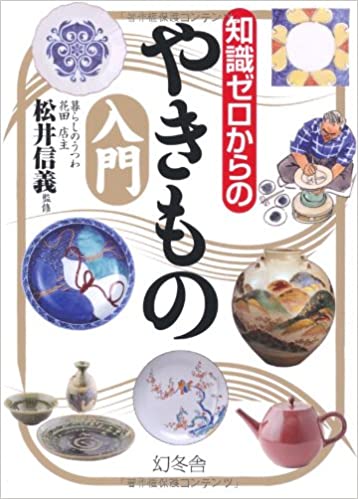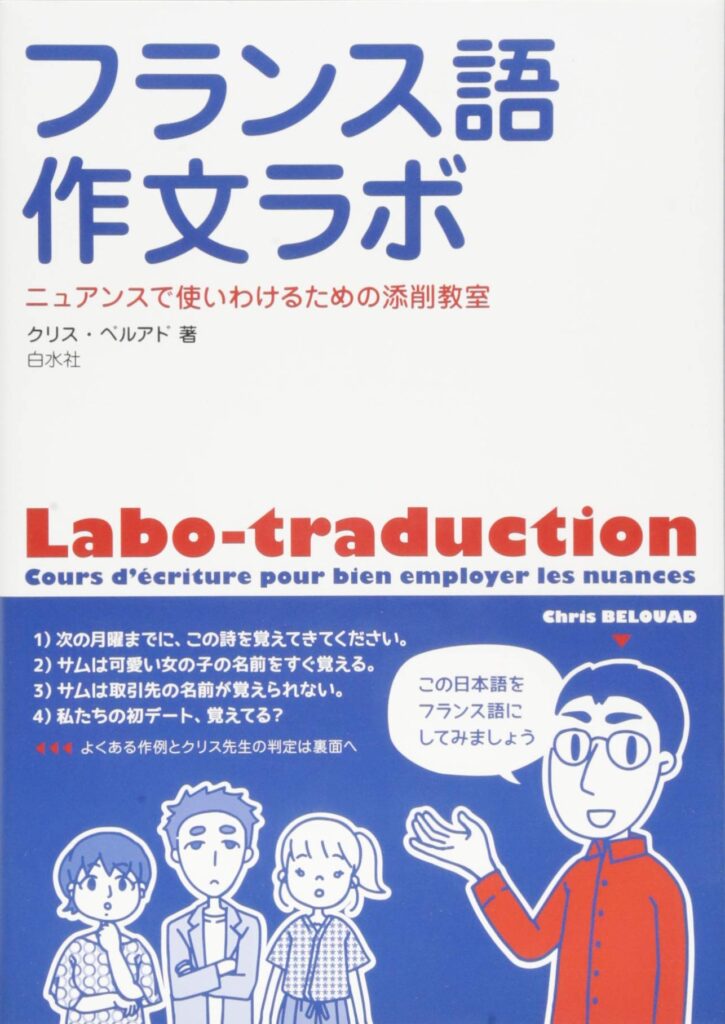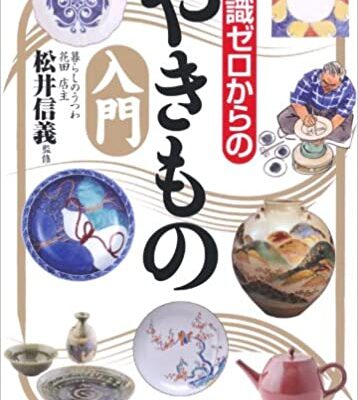松井信義 監修「知識ゼロからのやきもの入門」 幻冬舎
ガイドの勉強をしていて、一番の苦手分野が“やきもの”です。興味がないわけではないのですが、やきものの産地が多すぎて、何から手を付ければよいのか戸惑ってしまいます。特に、自分の好みがわからないうちは、どうしてもこの分野の勉強が後回しになってしまいます。
私が最初に興味をもった焼き物は、国宝の曜変天目(稲葉天目)です。テレビ番組で紹介されたのがきっかけですが、その宇宙を感じさせるデザインあるいは模様に惹かれました。実物を見る機会は無いのですが、職場の近くに大阪市立東洋陶磁博物館があり、そこで開催されていた企画展で、日本伝世の油滴天目で唯一国宝に指定されている作品が展示されていました。この油滴天目が実に見事で、美しいなと食い入って見てきました。同時に展示されていた現代陶芸家の天目作品にも、いいなと思える作品がいくつも見つかりました。
本書は、第一章でやきものの装飾を解説しています。染付、色絵、象嵌、窯変など、やきものの表情を生み出す技について学ぶことができます。
第二章では、やきものの産地を紹介しています。有田焼、唐津焼、備前焼、京焼など14の産地について記載されています。苦手な人にとっては、それぞれの産地の特徴を覚えにくいのですが、実際にガイドとして行くエリアの産地について、1つずつ覚えればいいと思います。
第三章では、日本のやきものの成り立ちについて書かれています。古田織部、本阿弥光悦、野々村仁清、酒井田柿右衛門、北大路魯山人などの、やきもの史に輝く作家たちです。
第四章では、やきものの基本知識が説明されています。初心者の疑問に答える形式ですが、最初に、この部分を読んだ方が良いかもしれません。
第五章では、やきものの選び方、使い方を教えてもらいます。これらの知識は、海外からのお客さんに説明できる知識だと思われますので、しっかり身に付けたいものです。
知識を身に付けるには、やっぱり実地体験が大切だと考えます。私は未経験なのですが、近畿圏の産地を訪問して、是非、陶芸体験をしてみたいと思っています。そうすることで、人に伝える、知識が身に付けられかもしれません。(完)

価格:1,430円
(2021/6/27 17:29時点)
感想(1件)
Nobuyoshi Matsui supervised “Introduction to pottery from zero knowledge”, Gentosha
When I was studying to become a guide, my weakest area was pottery. It is not that I am not interested in it, but there are so many places where pottery is produced that I am at a loss as to where to start. Especially when I don’t know what I like, I tend to put off studying this field until later.
The first pottery I became interested in was the national treasure Yohhen Tenmoku (Inaba Tenmoku). I was attracted by its cosmic design and patterns. I have never had the opportunity to see the actual piece, but there is an exhibition at the Osaka Municipal Museum of Oriental Ceramics near my workplace that featured the only piece of Japanese Yutekitenmoku designated as a national treasure. I was fascinated by the beauty and splendor of this work. I also found a number of works by contemporary ceramic artists on display at the same time that I thought were very nice.
The first chapter of this book explains the decoration of yakimono. You can learn about the techniques that create the expression of pottery, such as Sometsuke, Iroe, Zogan (inlaying), and Yohen (kiln-forming).
The second chapter introduces the regions where pottery is produced. Fourteen production areas are described, including Arita-yaki, Karatsu-yaki, Bizen-yaki, and Kyo-yaki. For those who are not good at it, it is difficult to remember the characteristics of each production area, but you can learn about the production areas in the area you are actually going to as a guide, one at a time.
Chapter 3 describes the origins of Japanese pottery. These are some of the shining lights in the history of pottery: Furuta Oribe, Honami Koetsu, Nonomura Ninsei, Sakaida Kakiemon, Kitaoji Rosanjin, and many others.
In Chapter 4, basic knowledge of pottery is explained. It is in the form of answers to beginners’ questions, but it may be better to read this section first.
In Chapter V, you will be taught how to select and use pottery. These are the knowledge that you will be able to explain to your customers from overseas, so you will want to learn them well.
I believe that hands-on experience is the key to acquiring knowledge. I have no experience, but I would very much like to visit production areas in the Kinki region and try my hand at pottery making. By doing so, I may be able to acquire knowledge that I can pass on to others. (End)

新品価格
¥2,420から
(2022/5/6 23:06時点)
Nobuyoshi Matsui supervise “Introduction à la poterie à partir de zéro connaissance”, Gentosha
Lorsque j’étudiais pour devenir guide, mon domaine le plus faible était la poterie. Ce n’est pas que je ne m’y intéresse pas, mais il y a tellement d’endroits où l’on produit de la poterie que je ne sais pas par où commencer. Surtout quand je ne sais pas ce que j’aime, j’ai tendance à remettre à plus tard l’étude de ce domaine.
La première poterie à laquelle je me suis intéressée est le trésor national Yohhen Tenmoku (Inaba Tenmoku). J’ai été attiré par son design et ses motifs cosmiques. Je n’ai jamais eu l’occasion de voir la pièce elle-même, mais il y a eu une exposition au musée municipal de la céramique orientale d’Osaka, près de mon lieu de travail, qui présentait la seule pièce de Yutekitenmoku japonais désignée comme trésor national. J’ai été fasciné par la beauté et la splendeur de cette œuvre. J’ai également trouvé un certain nombre d’œuvres d’artistes céramistes contemporains exposées au même moment que je trouvais très belles.
Le premier chapitre de ce livre explique la décoration des yakimono. Vous y découvrirez les techniques qui permettent de créer l’expression de la poterie, telles que Sometsuke, Iroe, Zogan (incrustation) et Yohen (façonnage au four).
Le deuxième chapitre présente les régions où la poterie est produite. Quatorze zones de production sont décrites, dont Arita-yaki, Karatsu-yaki, Bizen-yaki et Kyo-yaki. Pour ceux qui ne sont pas doués, il est difficile de se souvenir des caractéristiques de chaque zone de production, mais vous pouvez vous renseigner sur les zones de production de la région dans laquelle vous vous rendez réellement en tant que guide, une par une.
Le chapitre 3 décrit les origines de la poterie japonaise. Il s’agit de quelques-unes des figures marquantes de l’histoire de la poterie : Furuta Oribe, Honami Koetsu, Nonomura Ninsei, Sakaida Kakiemon, Kitaoji Rosanjin, et bien d’autres.
Dans le chapitre 4, les connaissances de base sur la poterie sont expliquées. Il se présente sous la forme de réponses aux questions des débutants, mais il est préférable de lire ce chapitre en premier.
Au chapitre V, vous apprendrez à choisir et à utiliser les poteries. Ce sont les connaissances que vous pourrez expliquer à vos clients d’outre-mer, vous voudrez donc bien les apprendre.
Je crois que l’expérience pratique est la clé de l’acquisition des connaissances. Je n’ai aucune expérience, mais j’aimerais beaucoup visiter les zones de production de la région de Kinki et m’essayer à la fabrication de poteries. En faisant cela, je pourrais acquérir des connaissances que je pourrais transmettre à d’autres. (Fin)
